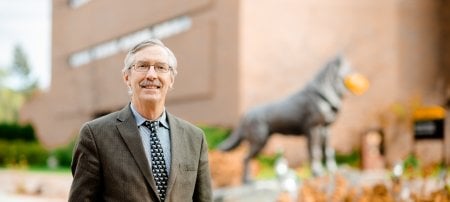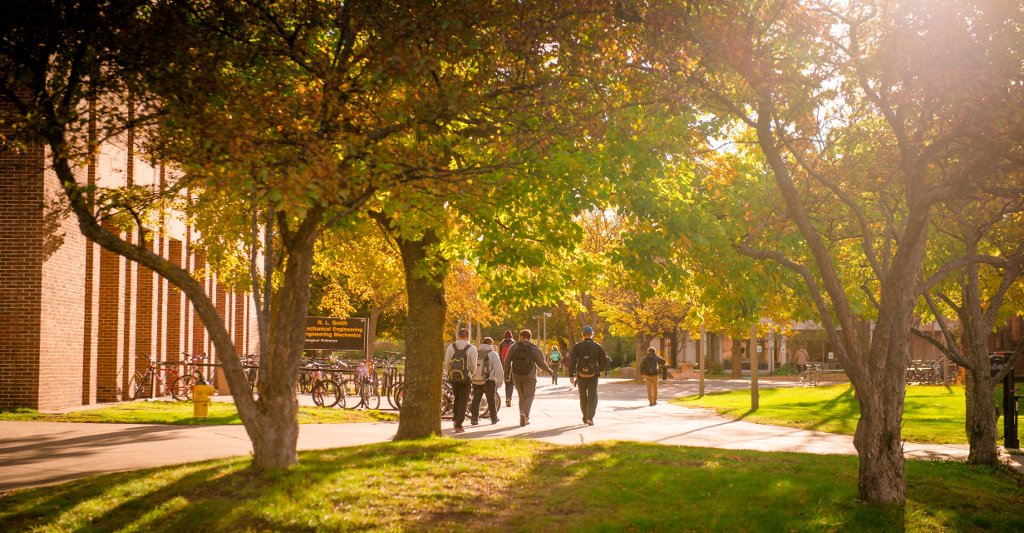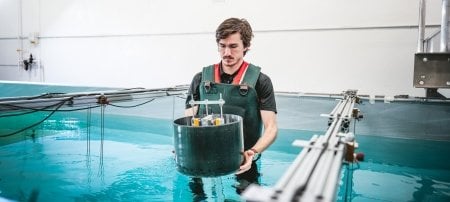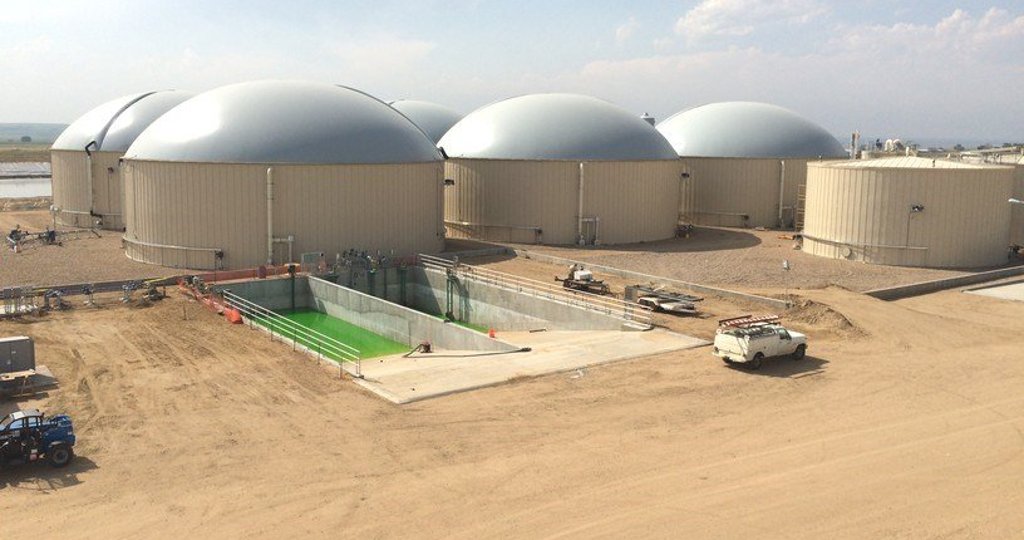When an engineer has a complex problem, they break it into smaller problems.
Start seeing double. That’s what researchers at the Sustainable Futures Institute do. Because not everything is as it appears: deadly gases lay trapped beneath lake waters; mountains of manure release more than smells; coffee pots, whiteboards, pencils, paper cost more than their price tags.
In each of these cases, engineers studying a product’s sustainability have to see
more than a landscape, trash heap, or everyday object. They see the complex interactions
that build up a product’s whole life from cradle to grave; they call measuring those
relationships and impacts a life cycle assessment, often shorthanded
to LCA.
While LCAs are a common and widely used technique throughout many engineering fields, it takes a specific frame of mind to apply it to sustainability. David Shonnard is the director of the Sustainable Futures Institute and oversees two programs for students to earn an undergraduate or a graduate certificate in sustainability. He summarizes the mindset like this: “Typically, when an engineer has a complex problem, they break it into smaller problems.
Each fall, Shonnard offers ENG/SS 5510, Sustainable Futures I, a cross-listed class where undergraduates and graduate students learn the basics of LCA methodologies and the Sima Pro software used for analyses, then apply the lessons to a term project focusing on a product that they select. Some students choose a tool related to their field, others look around the classroom or their homes for inspiration—like comparing the impacts of drip coffee versus single-cup machines or smartboards versus regular whiteboards. But Sam Fentress ‘16 looked abroad and went big.
Lake Kivu is a large volcanic lake bordering the Democratic Republic of Congo and Rwanda in Africa. The waters are highly stratified with thick layers of carbon dioxide and methane resting at the lake bottom. More than a geologic anomaly, the heavy gases are a danger: in 1986, Lake Nyos, another volcanic lake in Cameroon, turned over and exploded in what is called a limnic eruption, releasing hundreds of thousands of tons of heavy gases that overwhelmed nearby villages and suffocated nearly 2,000 people. Because of the similar stratification of Lake Kivu, natural disaster experts have worried about the threat of a limnic eruption and its impacts on the two million people living on its shores.
"I felt like an explorer."
Fentress happened to be studying Lake Kivu in a geological hazards and mitigation class at the same time she was enrolled in Shonnard’s Sustainable Future I course. When she found out that a specialized power plant in Rwanda drew energy by converting the lake’s methane into electricity, Fentress saw an opportunity to compare the release of greenhouse gases from a limnic eruption versus methane extraction for power production.
“I felt like an explorer,” Fentress says, explaining that she sees STEM research as the opportunity to delve into new, creative ideas and put some data behind them that make a difference in people’s lives. ”Methane extraction from Lake Kivu mitigates the hazard of a violent limnic eruption, provides electricity to Rwandans, and substantially decreases the greenhouse gas emission burden on the atmosphere.”
Methane is also 25 times more effective as a greenhouse gas than carbon dioxide and is the same gas that Sharath Ankathi examined halfway across the world in a Colorado dump. Large cattle operations are common along the front range and so are piles of manure. The Environmental Protection Agency reports that agriculture emissions account for nine percent of United States greenhouse gas emissions each year; municipal solid waste accounts for less but between 30 to 40 percent of the country’s food supply gets trashed and 97 percent gets buried in landfills, which decomposes and off-gases as methane.
Ankathi and Shonnard see that as a waste—not only of food but of energy. Anaerobic digesters convert methane into a usable energy source, which Ankathi and Shonnard have put some numbers to in a new paper published in Environmental Progress & Sustainable Energy and showed in a case study at the Heartland Biogas LLC outside Denver, Colorado. Whether a biogas facility or a home coffee pot or a natural hazard, Shonnard says the power of LCAs lies in the ability to scale up.
"30 to 40 percent of the country's food supply gets trashed and 97 percent gets buried in landfills."
“The methods apply to many types of manufacturing, and even other activities like the service economy,” Shonnard says. “With any kind of human activity, you can apply an LCA.”
By putting their LCA expertise to use in so many different challenges, the Sustainable Futures Institute reveals the deeper stories of vistas, waste, and common items, showing their intricate connections with people and the rest of the world.
Michigan Technological University is a public research university founded in 1885 in Houghton, Michigan, and is home to more than 7,000 students from 55 countries around the world. Consistently ranked among the best universities in the country for return on investment, Michigan’s flagship technological university offers more than 120 undergraduate and graduate degree programs in science and technology, engineering, computing, forestry, business and economics, health professions, humanities, mathematics, social sciences, and the arts. The rural campus is situated just miles from Lake Superior in Michigan's Upper Peninsula, offering year-round opportunities for outdoor adventure.






